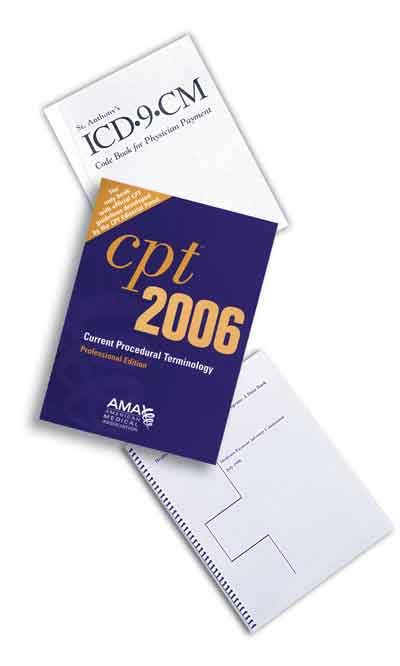A: CMS lists ophthalmology in the top seven specialties with heavy use of consultations. From 1999 to 2005, ophthalmologists increased their use of consultations by 67 percent. Though not specifically targeted at ophthalmology, the Office of Inspector General published a report (OEI-09-02-00030) on March 29, 2006 that stated, "In 2001 … Medicare allowed approximately $191 million more than should have been allowed for services that were billed as consultations, but did not meet Medicare's definition of a consultation." The OIG recommended that carriers educate providers on consultation criteria.
Medicare's attention to this topic may signal increased scrutiny from other payers. We have already seen increased attention to consultative services by some commercial payers.

Q: What has CMS published recently on consultations?
A: On December 20, 2005 CMS published Transmittal 788, which recognizes the coding changes made by the American Medical Association in CPT effective January 1, 2006. These changes include the elimination of follow-up inpatient consultation codes (99261-99263) and confirmatory consultation codes (99271-99275). The transmittal also makes a number of policy changes concerning consultations and documentation requirements.
Q: Have there been any changes to the criteria published in the 1999 revision to consultation criteria?
A: Nothing major, but the changes put tighter constraints of the transfer of care and more rigid documentation requirements for the request of the consultation. The basic tenets of a consultation remain the same. They include:
• A request for consult exists.
• There is documentation of the request and need.
• The history and exam are performed with or without additional tests.
• A written report is provided to the referring physician.
• No transfer of care occurs.
• The consulting physician may treat the patient's condition immediately or subsequently.
Q: Is it sufficient to have the referring physician's staff person contact our office to arrange for a consultation without any formal documentation of the request?
A: No. Prior to CMS's transmittal, the consultant could presume to know the intent of the attending physician and document the need for consultation and who requested it in his chief complaint and in the opening paragraph of the written report to establish that the service was a consultation. CMS states in the revised policy, "The initial request may be a verbal interaction between the requesting physician and the consulting physician; however, the verbal conversation shall be documented in the patient's medical record, indicating a request for a consultation service was made by the requesting physician or qualified NPP." CMS's concern is that if the two physicians do not speak, that pertinent details may be lost if staff members handle the request. Officially, staff members cannot pass along the request for consultation, although extenuating circumstances might occasionally permit some latitude. Infrequently, the two physicians might speak about a patient's condition, but in ophthalmology, we believe this is not very common.
Q: How should the request for consultation be documented?
A: The Consultation Request section of the guidelines now states, "A written request for a consultation from an appropriate source and the need for a consultation must be documented in the patient's medical record." Prior to this transmittal, the request could be oral, but CMS inserted the word written in this section.
Q: If we don't share a medical record with the referring physician, how do we assure documentation of a consultation request?
A: The referring physician could send a copy of his chart note noting that a request for consultation exists in his plan. Alternatively, you may use a request for consultation form. A copy of the form in both providers' records confirms the consultation request and medical necessity.
In the situation of a shared medical record (i.e., group practice, nursing facility, hospital), written documentation of the request and need is easy. The request for consult is indicated in the referring physician's plan or in a separate "order." The consultant does not have to look too far to find it.
Q: Has the additional language to the "transfer of care" definition made it more difficult to support a consultation?
A: Yes. In 1999, the definition was liberalized to allow the consultant to treat the patient as long as he did not take over complete care of the patient (i.e., all care from head to toe). The new definition is more narrowly constructed and states: "A transfer of care occurs when a physician or qualified NPP requests that another physician or qualified NPP take over the responsibility for managing the patient's complete care for the condition and does not expect to continue treating or caring for the patient for that condition. When this transfer is arranged, the requesting physician or qualified NPP is not asking for an opinion or advice to personally treat this patient and is not expecting to continue treating the patient for the condition."
Q: How do we differentiate between a consult and a transfer of care?
A: When a consultation is requested, the consultant is asked to evaluate a problem and provide an answer to the query posed by the attending. The question might be "What's the diagnosis?" or "What course of treatment is recommended?" The specialist is consulted because the attending needs additional information to better care for the patient. Following a request for consultation, the attending physician expects to see the patient again and to remain involved in care and treatment. When a physician "transfers" the patient to another doctor, then the fundamental question-answer interplay does not happen. In fact, the referring physician does not expect to participate in the patient's future care.
Ms. McCune is vice president of the Corcoran Consulting Group. Contact her at DMcCune@corcoranccg.com.



